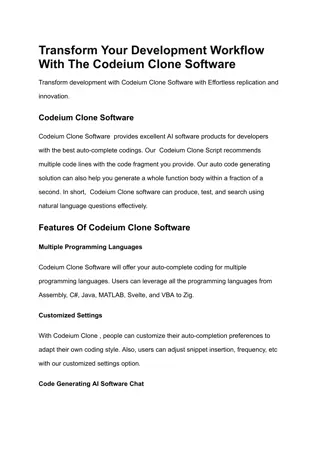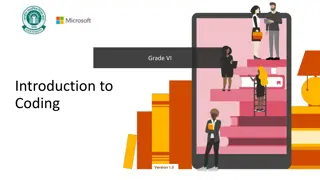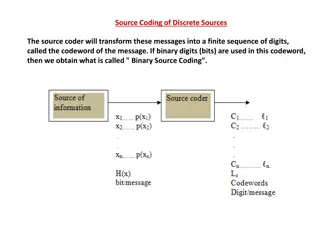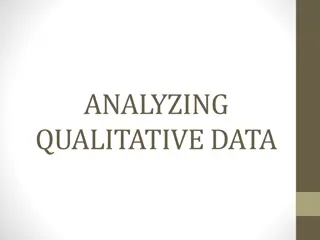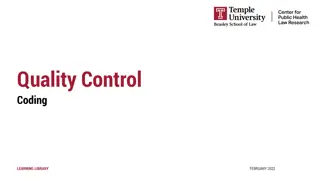Data Editing and Coding Processes in Research
Data editing involves the detection and correction of errors in raw data to ensure accuracy and consistency. It includes field editing, where investigator reviews data for completeness, and central editing for thorough editing on completed forms. The coding process assigns symbols to responses for analysis, ensuring data is categorized appropriately. Efficient analysis relies on coded data for extracting critical information.
Download Presentation

Please find below an Image/Link to download the presentation.
The content on the website is provided AS IS for your information and personal use only. It may not be sold, licensed, or shared on other websites without obtaining consent from the author.If you encounter any issues during the download, it is possible that the publisher has removed the file from their server.
You are allowed to download the files provided on this website for personal or commercial use, subject to the condition that they are used lawfully. All files are the property of their respective owners.
The content on the website is provided AS IS for your information and personal use only. It may not be sold, licensed, or shared on other websites without obtaining consent from the author.
E N D
Presentation Transcript
Editing Editing of data is a process of examining the collected raw data to detect errors and omissions and to correct these when possible. Editing is done to assure that the data are accurate, consistent with other facts gathered, uniformly entered, as completed as possible and have been well arranged to facilitate coding and tabulation Two types of Editing: Field Editing Central Editing
Field Editing Field editing consists in the review of the reporting form by the investigator for completing what the latter has written in abbreviated and/or illegible form at the time of recording the respondets response. This type of editing is necessary because individual writing style could often be difficult for others to decipher. It should preferably be done as soon as possible after the interview (on the same day) The investigator must restrain himself and must not correct errors of omission by simply guessing what the informant would have said.
Central Editing Central editing should take place when all forms and schedules have been completed and returned to the office. This type of editing implies that all forms should get a thorough editing by a single editor in small study and by a team of editor for large enquiry Editors may correct the obvious errors such as an entry in the wrong place, entry recorded in months when it should have been recorded in weeks, and the like. In case of inappropriate or missing replies, Editor can sometimes determine the proper answer by reviewing the other information in the schedule. At times. The respondent can be contacted for clarification. The editor must strike out the answer if the same is inappropriate and he has no basis for determining the correct answer or the response. In such a case, an editing entry of no answer is called for.
Coding Coding refers to the process of assigning numerals or other symbols to answers so that responses can be put into a limited number of categories or classes. Such classes should be appropriate to the research problem under consideration. They must also possess the characteristics of exhaustiveness and also that of mutual exclusiveness which means that a specific answer can be placed in one and only one cell in a given category set. Another rule to be observed is that of uni dimensionality by which is meant that every class is defined in terms of only world concept.
Coding Cont.. Coding is necessary for efficient analysis and Through it the several replies may be reduced to a small number of classes which contains the critical information required for analysis. But in case of hand coding, some standard method may be used. One such standard method is to code in the margin with a coloured pencils. Other method can be transcribing the data from Questionnaire to a coding sheet. Whatever method is adopted, one should see that coding errors are altogether eliminated and reduced to the minimum level.





